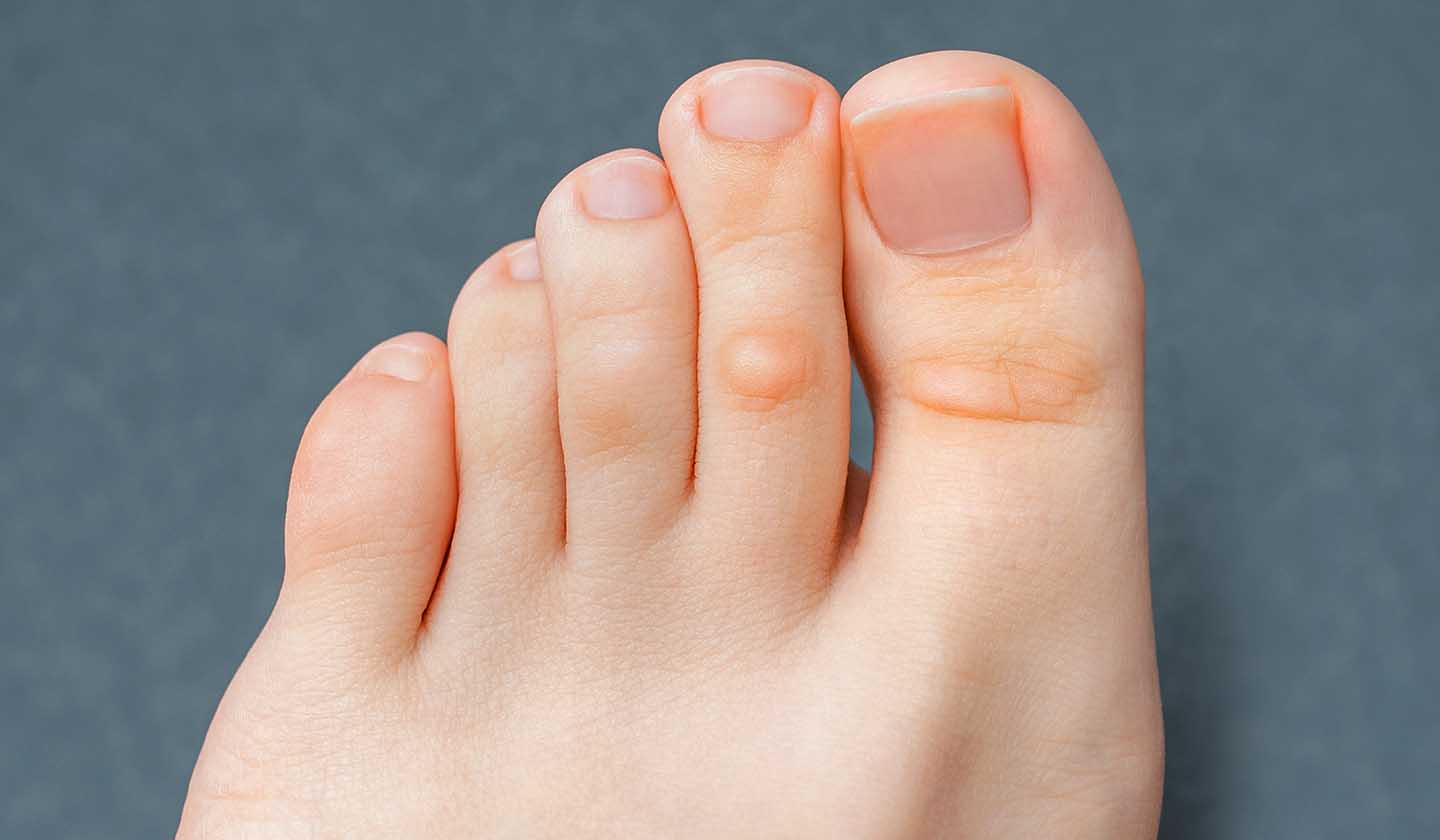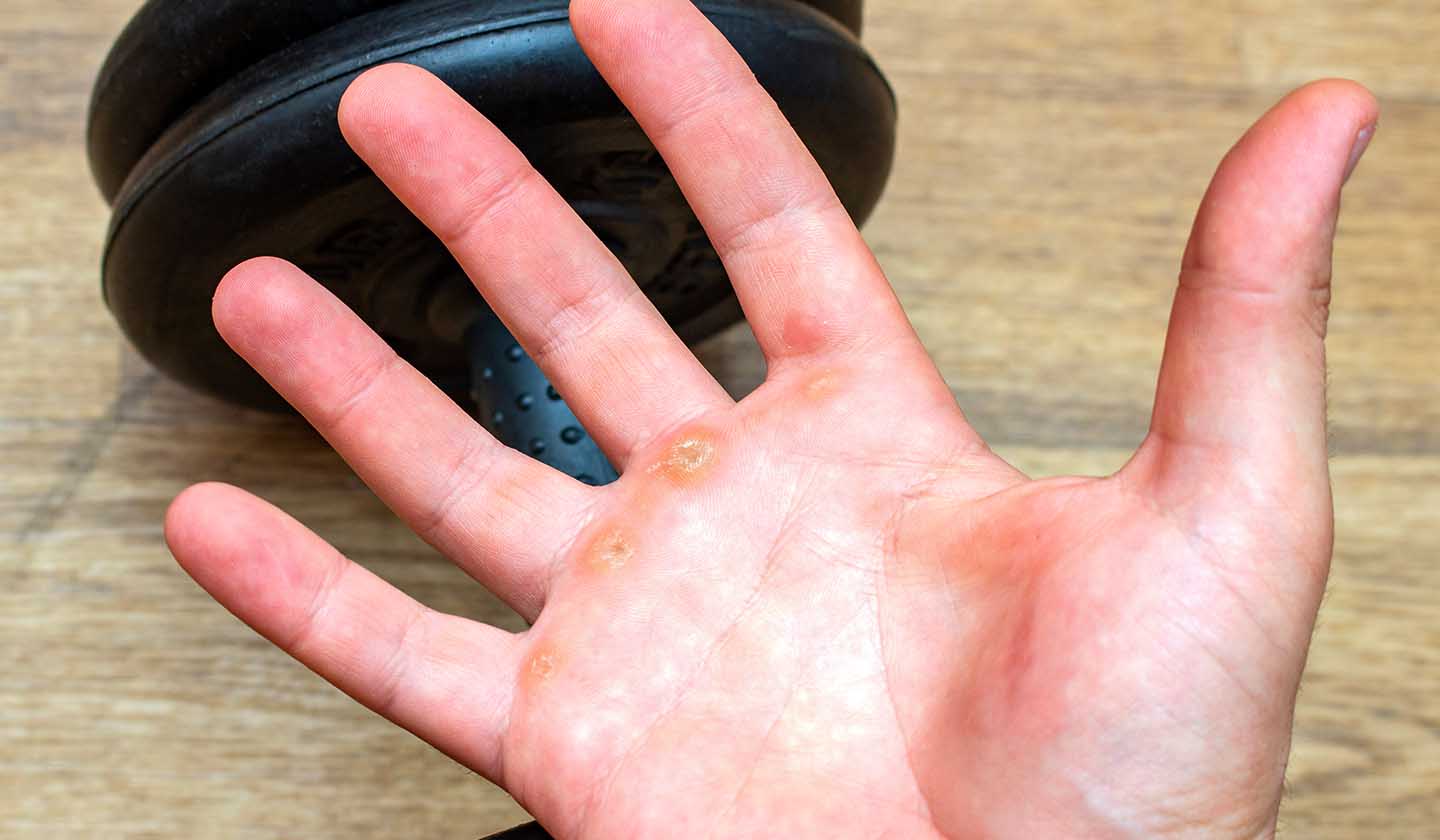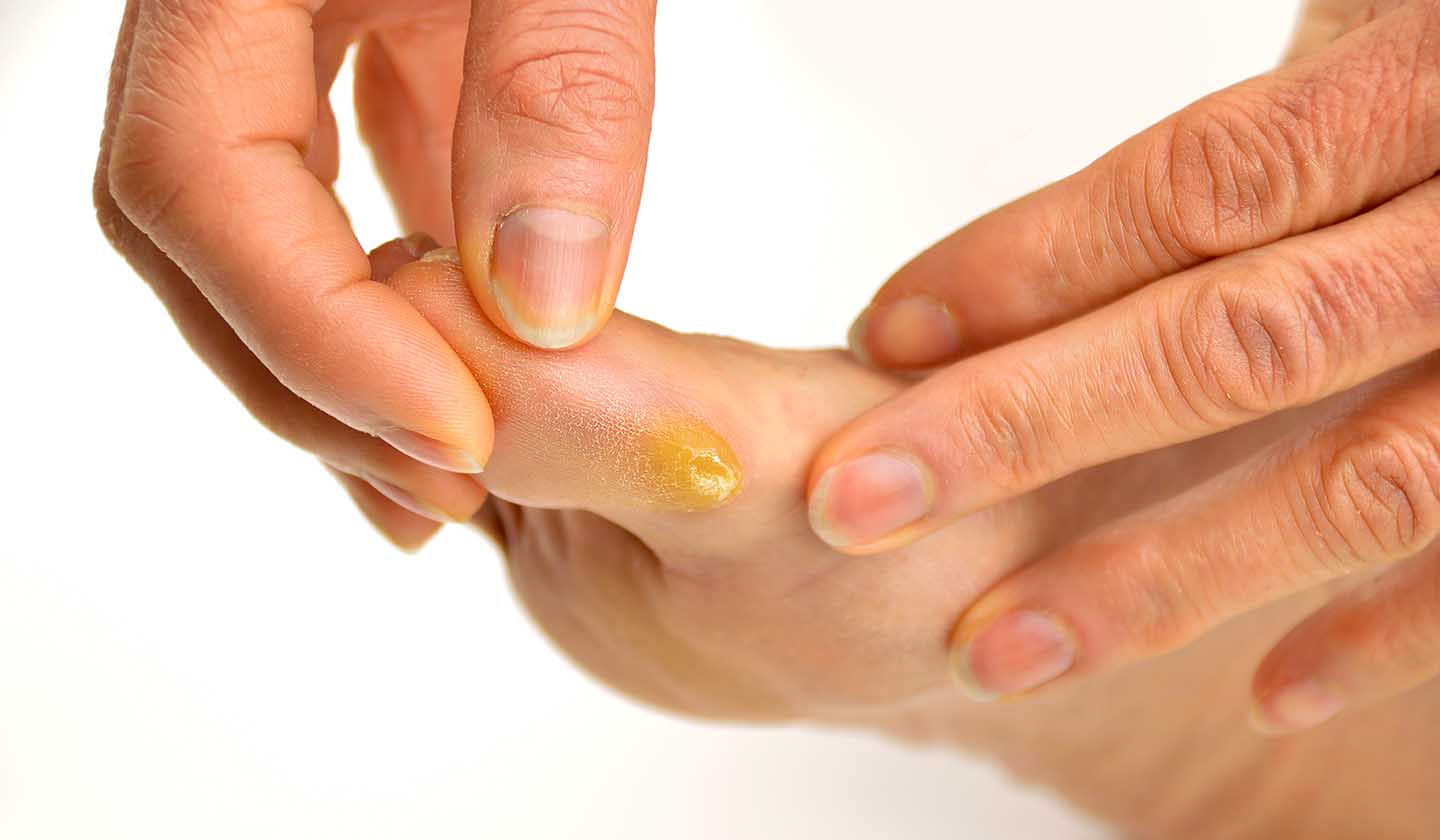Dermatology
It is preferable to have no callus

When calluses appear, walking can be painful and uncomfortable.
Learn how to avoid or treat this discomfort.
Calluses are areas of the skin that become thicker and harder, causing a small bump. They usually do not have serious health complications; however, they can cause discomfort or even pain. They tend to appear on the fingers or toes, but they can also appear on the sole of the foot.

How do calluses develop?
Calluses develop due to constant skin exposure to pressure or friction. The skin reacts by forming a thicker and coarser external layer to protect itself from the “aggression”, that is, by getting rougher where the callus develops.
There are a few everyday situations in which hands and feet are subject to increased pressure and / or friction, thus contributing to the appearance of calluses.
Namely:
- Wearing shoes without socks;
- Wearing heels, wrong size, or uncomfortable shoes;
- Lifting weights;
- Wearing rings;
- Playing a musical instrument.

Symptoms
The callus can develop and go unnoticed, or it can cause discomfort.
When they appear on the feet, they can cause pain, swelling and discomfort when walking.
In general, a callus is characterized by:
- A thicker and hardened layer of skin
- Dry peeling skin, possibly with a yellowish colour
- Slight burning sensation

Treatment
As soon as you notice that a callus is forming on your skin (in your hand or foot), you should try to stop its development to avoid discomfort and pain. The first thing you need to do is to relieve pressure and friction in the affected area.
What to do?
- Massage the callus with keratolytic action cream (agents that soften and help to remove the top layer of the skin);
- Remove thick skin with the aid of a file or pumice, immediately after bathing;
- Wear a felt callus pad to reduce pressure and friction.
The first two steps mentioned above should not be performed by persons with diabetes. If this is the case, do not treat a callus on your own. Instead, a podiatrist or doctor should be sought.
What you should avoid
- Do not use sharp objects to remove calluses;
- Do not wear heels or tight shoes frequently;
- Avoid walking barefoot;
- Do not walk long distances with ill-fitting shoes.

How to prevent it?
You can implement measures in your routine to prevent the development of new calluses.
Namely:
- Choose comfortable shoes that are well adjusted and that do not cause friction;
- You can wear soft insoles in your shoes;
- Wear protective pads in the area where you feel discomfort (it relieves pressure and friction caused by the shoe, preventing the formation of a callus);
- If you wear heels, you can use felt pads in the sensitive points to reduce pressure and friction;
- Remove the hardened skin from your feet regularly using, for example, a pumice stone or sandpaper after bathing (use gently to avoid bruising);
- Take care of your feet daily by applying a specific moisturising foot cream.
Keep in mind that:
If you have diabetes, a heart disease or circulation problems you should talk to your doctor.
Sources
iSaúde
Farmácia Distribuição Magazine
Também lhe poderá interessar
Dermatology
Mycosis? Let's get on with it
Viruses






